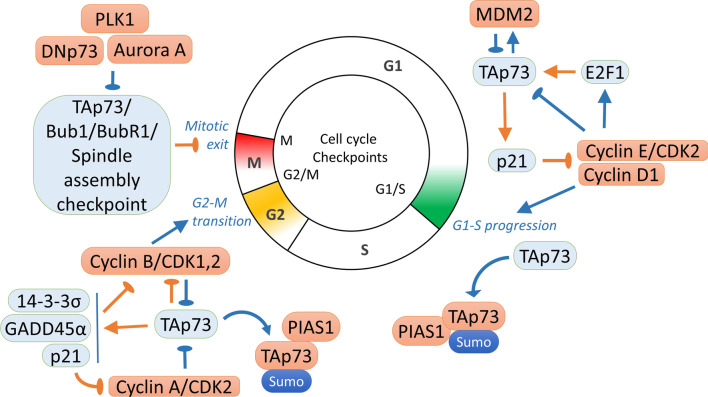Fig. 2.
Cell cycle regulation by p73. In blue are molecules and signalling that promote cell cycle and in orange are signaling that repress cell cycle progression. Colors on the cell cycle diagram represent p73 activity that decreases at checkpoint exit [81, 186, 188]. G1/S checkpoint. Active TAp73 induces p21 leading to repression of the cell cycle related genes [70]. In turn, TAp73 transcriptional activity is inhibited by phosphorylation at Thr-86 by CyclinE/CDK2 complexes [28], or by inhibition of E2F1 transcriptional activity by the E2F1/Rb complex [189–191]. G2-S checkpoint: TAp73 inhibits Cyclin B transcription [192] or via induction of GADD45a [193], Wee, p21 and 14–3–3σ [76, 90], that represses CyclinB/CDK1 [194, 195]. To facilitate G2-M transition, p73 activity is inhibited by CyclinB/CDK1 [188], by MDM2 negative feedback loop [196] or by PLK2 [76]. Mitotic checkpoint: overexpressed TAp73 interacts with SAC components Bub1, Bub3, BubR1 leading to checkpoint activation [197, 198]. DNp73 was shown to bind to SAC proteins but have no activity in M- checkpoint [198] or to inhibit checkpoint functions [199, 200]. Phosphorylation of the p73 S235 by Aurora-A kinase results in inactivation of its DNA damage and spindle assembly checkpoint activation functions and mitotic exit due to release of the Mad2-Cdc20 from the SAC spindle assembly checkpoint complex [201, 202]

